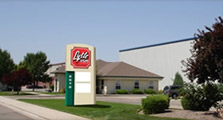Get Your Sign Approved!
September 9th, 2010
Permitting your new sign is the final step prior to placing it in production. It is a vital, and sometimes painful, process. Prior to actually going to the local municipality, it is often necessary to obtain landlord or property owner approvals. This can range from a simple “Looks good to me” all the way to the need for an affidavit of legal interest and/or a copy of the property deed. This requirement, usually varies by government entity.
A good sign professional will have done his or her homework prior to even drawing up a sign for your review and approval. This homework includes understanding signage allowances based on the zone your business will reside in, any sign criteria that may have been established by the landlord and which also may or may not be on file with the city or county, and any previous actions that may have been taken regarding signage for the development that you are setting up shop in. Most lease documents that you will receive will at least have a copy of the landlord’s sign criteria (often called CC & R’s). Finally, your representative should also be aware if your property falls within any overlay districts such as historic or, in the case of downtown Boise, CCDC. These districts may have a large say in whether or not your sign will be approved and permitted. Following receipt of all necessary “pre-approvals” your representative will prepare the necessary documents for the submittal of a permit application which will also include drawings, site plans, and maybe even engineered drawings showing footing details etc. for free standing signs. There are basically three levels of permitting and the necessary level should have been identified prior to the application having been submitted:
- Staff Level – If your sign meets all of the requirements in terms of landlord approvals (if applicable) and all zoning regulations for the municipality and any overlay districts, your sign will typically be approved on a staff level review and this review may be a matter of days or maybe a couple of weeks. Once again…….typically.
- Planned or Master Sign Program – Different cities may require a master or planned sign program particularly if the development is to have multiple tenants. They use this program to control sign size, placement, and often to ensure some degree of consistency in sign types. Some cities require these while other cities might offer them. For those that “offer” them, these are often used to establish increased signage allowances where a business or businesses might be granted to operate in a zone that they would not typically be found and this is usually via a conditional use permit. For example, retail uses in a residential zone that would normally be found in a commercial zone. This is becoming more and more common. Depending on the municipality, this may be granted based on staff level review or it may require public hearings.
- Public Hearing and/or Variance – Some planned sign programs, and most variances (requesting for something not typically allowed and usually based on a provable hardship that was not of your doing), do require a public hearing process. And, that may also involve pre-submittal meetings, neighborhood meetings, and more than one public hearing. Then, if you don’t like the result, there may be an avenue for appeal or appeals. It is a lot of work for everybody involved.
Ultimately, working with a professional sign person can make this process as painless as possible. Lytle Signs handles our own permitting and not every sign company works that way. We build relationships with cities and understand both their codes and their processes. And, we are often able to avoid a variance procedure altogether based on our intimate knowledge of the “system”.

